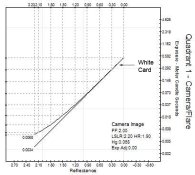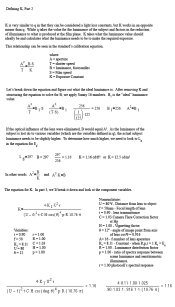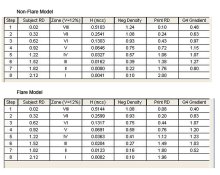As much as I am a fan of Adams, I think the subject of flare is a real shortcoming of The Negative. It is mentioned in little more than a cursory way, but can be a major source of distortion in Zone System testing and applications. It seems like something that should be given a full explanation even if we can't control it.
Just my thoughts here, nothing critical. My views are geared more toward practicality, which the newcomer or first-timer parusing these threads must never, never, ever lose sight of, in the midst of all this theory.
Your're right, it is not mentioned to any appreciative manner that even remotely resembles the type of discussions that occur here, yet his work speaks for itself, how important was it to him, I don't know, just asking. It begs the question, in my mind, as to just how important it really is in practical film testing for EI and N-times. It makes for discussion, and I do follow it, but just how important is it? This is not to imply that I think it has no affect, only that it's affect, has got to be so dependent on "degree" as to not warrant much consideration in the intellegent use of the Zone System.
From
The Negative, Appendix 1, regarding testing (I'm sure you've seen it, but it makes my point):
"Choose a film and developer you use often, and be sure to use the same camera, shutter and lens throughout. Your exposure meter, lens diaphragm, shutter, and darkroom thermometer must be reliable----calibrated by a technician if possible. Once this "system" has been tested, any variations introduced by a change of equipment (such as the possible difference in aperture calibration or flare introduced by changing lenses) should be quite apparent if they are significant. For a change in film and/or development, of course, new tests must be conducted."
So, essentially, flare, if significant, should be apparent with intelligent use of the ZS or any system and in that respect I fail to see any distortion in testing or application. I consider myself a competent ZS user and I simply have not been able to make a determination that flare is "apparent" in my "system", even though I'm fully aware that the tests I carry out (an in-camera contacted step tablet, exposed to Zone X to an evenly and diffusely illuminated single tone test target) are flare free. I make a decision before releasing the shutter as to what measure I may take to deal with possible flare influences, it is a negative by negative consideration and I rarely do anything different, and when I do, it is usually a -1/3 to -2/3 reduction in exposure. When compensating for it or not, the desired print is always obtainable as envisioned, flare has not seemed to affect the end result. If I had an older uncoated lens and switched from my new Nikkor to it, well then, it would be "apparent", even before exposure, that flare is going to affect my "placement".
So I disagree with your statement, but given the spirit of the discussion I understand why you make it. In keeping with the OP, I would say to those wishing to carry out film tests for themselves for the first time, to just do it. Find a source i.e., BTZS, The Negative, Schaeffer, Lambrecht----follow it, and it only, to the "T" and be careful of outside advice, it is sure to trip you up. As one understands the concept of "expose for the shadows and develop for the highlights"----which the ZS and BTZS are simple vehicles toward that end, then one already has all they need to know to know how to deal with flare. At that juncture, flare in testing for EI becomes a mute point and you are assured that flare in actual photographing is intelligently dealt with.
Just my opinion folks

.




 .
.


